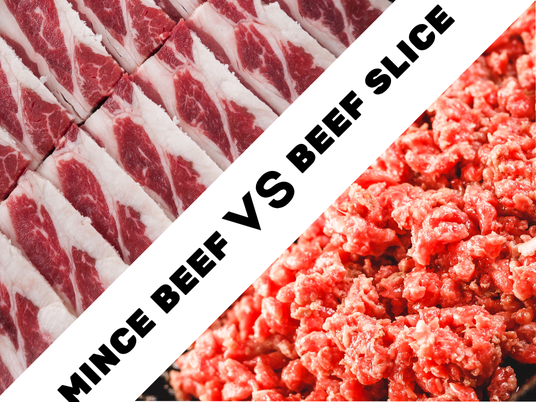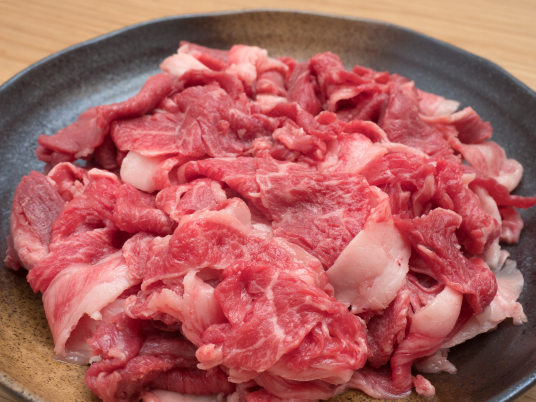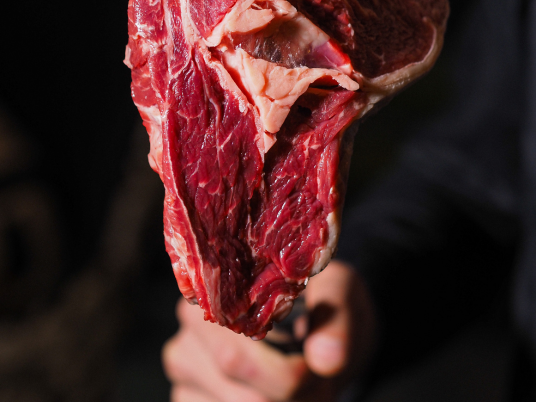Sliced Meat vs Mince Beef – In the culinary world and food industry, the choice of meat type significantly affects the final outcome of a dish. Among the various meat cuts, two of the most commonly used are sliced meat and mince beef. But between the two, which one is actually used more often? What makes one more popular than the other? This article provides a comprehensive comparison between short plate beef vs ground beef, as well as the factors that influence the choice—especially among culinary business operators and household consumers.
What Is Sliced Meat?
Sliced meat refers to thinly cut beef, usually sliced across the grain to create a tender texture and quick cooking time. This cut is frequently used in various Asian cuisines, such as yakiniku, sukiyaki, shabu-shabu, and local stir-fry dishes. Sliced beef typically comes in various thickness levels, depending on the dish being prepared.
The main advantages of short plate beef lie in its presentation and cooking speed. Due to its thinness, it cooks quickly, making it ideal for restaurants that prioritize fast service and time efficiency.
Getting to Know Mince Beef
On the other hand, mince beef is beef that has been processed through a meat grinder. This type of meat is widely used in dishes such as meatballs, burgers, spaghetti bolognese, lasagna, and other home-cooked meals. The key advantage of ground beef is its versatility in being transformed into various menu items.
Mince beef is highly favored by the processed food industry as it easily blends with other ingredients such as spices, herbs, and additives. The grinding process also results in a texture that is easier to chew, making it suitable for all ages.
Sliced Meat vs Mince Beef
 In terms of usage frequency, sliced meat has seen a rise in popularity, especially among Korean and Japanese restaurants that are flourishing across Indonesia. Meanwhile, ground beef still dominates the processed food and household sectors due to its affordability and versatility.
In terms of usage frequency, sliced meat has seen a rise in popularity, especially among Korean and Japanese restaurants that are flourishing across Indonesia. Meanwhile, ground beef still dominates the processed food and household sectors due to its affordability and versatility.
However, the popularity of sliced beef has also surged in the retail market, in line with the growing trend of restaurant-style cooking at home. Many consumers now prefer purchasing short plate beef to recreate BBQ or hotpot experiences at home. This trend is further supported by the increasing availability of high-quality sliced beef suppliers offering ready-to-cook products in practical packaging.
Factors Influencing Meat Choice
Type of Dish
The type of dish largely determines whether sliced meat or mince beef is used. Dishes requiring a visually appealing and juicy texture—like yakiniku, sukiyaki, and bulgogi—tend to use shortplate meat. Meanwhile, dishes such as spaghetti, burgers, or stews are more suited for ground beef.
Cooking Time
Sliced beef cooks much faster due to its thin cut, making it advantageous for fast food service or large-scale cooking. Mince beef also cooks easily but is better suited for medium-cook dishes like sauces or soups.
Texture and Flavor
Sliced meat offers a more satisfying bite as it retains the whole structure of the meat. Conversely, ground beef excels in flavor absorption due to its finer and more open texture.
Economic Value
For mass production, mince beef holds the upper hand in terms of price and volume. However, for premium restaurants or themed eateries, sliced meat is perceived as more valuable due to its ability to enhance the dining experience.
Supplier Availability
Product availability also plays a role. Not all regions have easy access to quality shortplate suppliers, whereas ground beef is more readily available. However, many trusted meat suppliers in Bali and other regions now offer hygienically packaged frozen sliced meat.
Sliced Beef on the Rise Thanks to Culinary Trends

Global culinary trends greatly influence consumer preferences for meat types. The increasing popularity of Korean and Japanese cuisine in Indonesia has made sliced beef highly sought after—not only by major restaurants but also by home cooks. Unsurprisingly, many sliced beef suppliers now compete to offer premium-quality varieties, from consistent marbling to machine-precision cuts.
Not limited to Jakarta and other big cities, Bali—being an international tourist destination—has also experienced a surge in demand for sliced beef. Many high-end restaurants and five-star hotels feature sliced meat dishes, making this product a crucial component in their food supply chain.
The Role of Trusted Meat Suppliers in Bali
Ensuring product quality and safety means selecting a trusted meat supplier in Bali is essential. Due to its thin and delicate form, sliced beef is more susceptible to damage if not handled professionally. Therefore, suppliers must be able to provide products that meet hygiene, storage, and international food handling standards.
Reliable suppliers usually have an integrated cold chain system that ensures the meat stays frozen from the warehouse to the customer. This adds value for both F&B businesses and households seeking high-quality meat at any time.
Recommendation of Best Meat Distributor in Bali

If you’re looking for the best meat distributor in Bali, we recommend Happy Farm Bali. As one of the top suppliers of sliced meat and other premium beef products, Happy Farm Bali is widely recognized for its commitment to product quality and customer service.
Happy Farm Bali offers a wide selection of precisely cut, high-quality sliced beef, ideal for restaurants, hotels, and home use. They also accommodate both small and large orders, making them a flexible choice for a variety of customer segments.
With a strong distribution network and guaranteed quality, Happy Farm Bali is the go-to solution for those in need of a trusted meat supplier in Bali. Whether you’re a restaurant owner, professional chef, or simply want to cook something special at home, Happy Farm Bali is your best partner for sourcing premium meat every day.